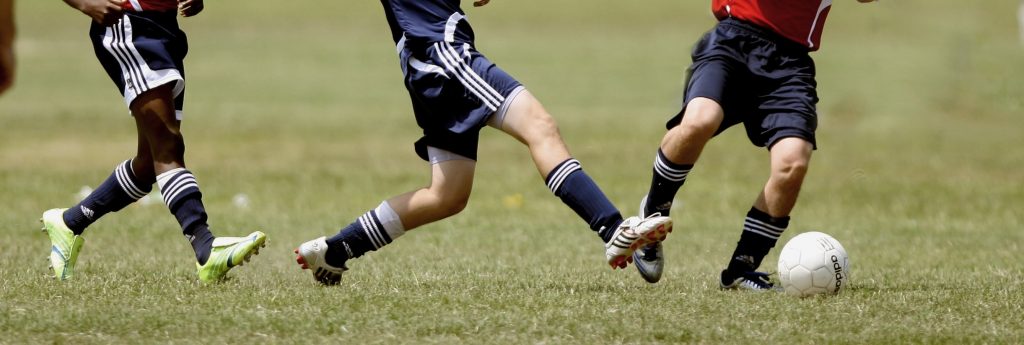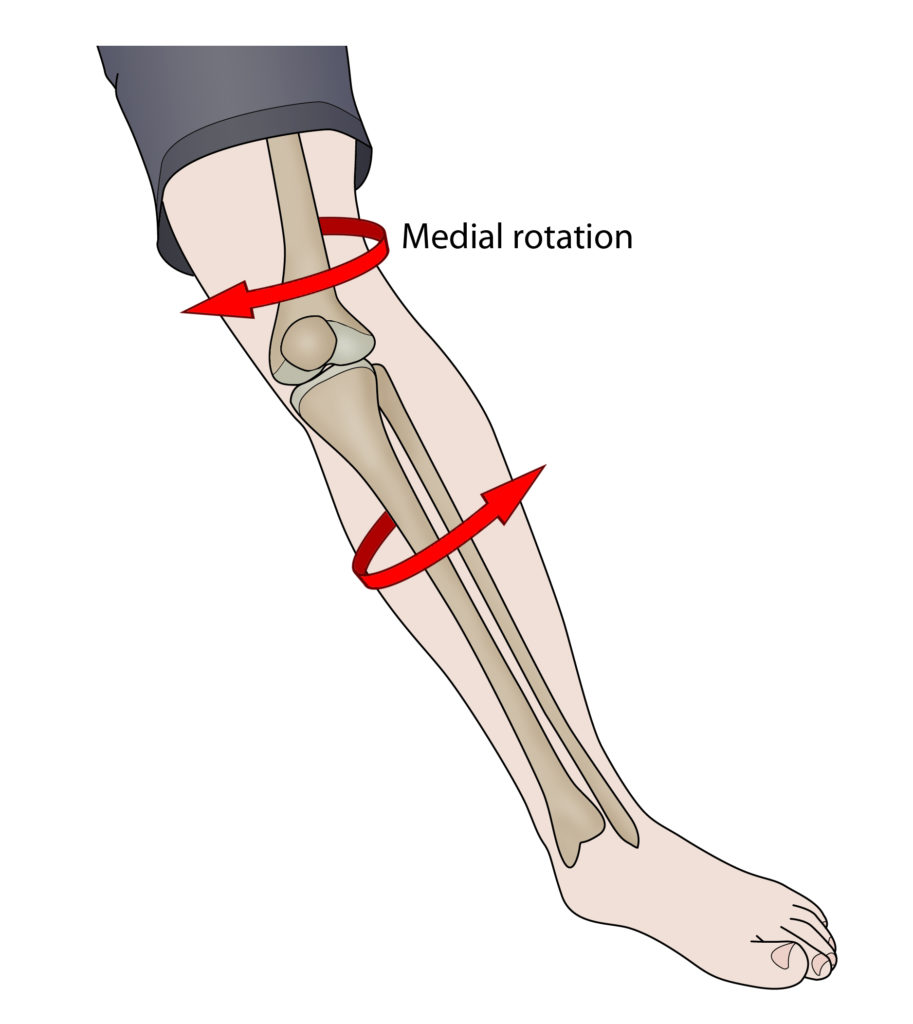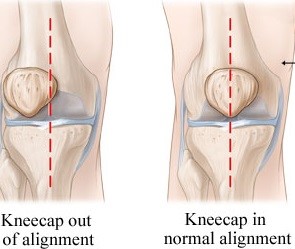
The winter sports season is back in full swing for kids and weekend warriors alike. Unfortunately, because of COVID many people are physically unprepared for the quick return to play. Pre-season training has gone out the window and many people have been resting for 2-3 months during lock-downs. This increases the risk of knee injury, especially in common field and court-based sports. So lets have a look at the four most common knee injuries in these popular sports.
Anterior Cruciate Ligament (ACL) Sprain Or Rupture
An ACL tear is one of the most devastating knee injuries in sport. The ACL is a ligament on the inside of the knee joint, and it is a major structure involved in the stability of the knee. 80% of all ACL injuries are non-contact (i.e. there is no collision or contact with another player), usually during fast change-of-direction movements or landing from a jump.

Have you ever seen a sports person change direction and then all of a sudden fall to the floor clutching at their knee? This is often due to an ACL injury. You may hear a very distinct pop and will feel your knee give way. Often putting weight back onto your knee is very painful and will cause a significant limp. As you rest on the sideline, you will probably notice that your knee swells up immediately. Your knee may also feel unstable, like it can’t take your weight and feels like may collapse or give way.
Unfortunately, this injury will usually require surgery if you plan to return to sport. Rehab post ACL reconstruction surgery will last 9-12 months and it is really important that you complete a full rehab program because re-rupture rates are as high as 200% if not rehabilitated properly. Importantly, in some groups such as adolescents, failure to fully rehab your knee greatly increases your chance of rupturing your other ACL!
There is growing research into conservative management of ACL injuries and rehab usually takes the same amount of time without the need for surgery. There are pro’s and con’s for each management approach, and your physio and surgeon will discuss your individual case with you to help you make the best treatment decision for your specific situation.
Meniscus Tears
The knee meniscus is made up of two C-shaped rings of cartilage that sit in the middle of your knee joint, between your thigh and shin bones. They provide a cushioning effect for your knee, and also contribute to the stability of the knee by increasing the congruency of the bony surfaces (i.e. they make them fit together more snugly).
Often meniscus injuries occur from a change of direction with your foot planted on the floor, causing a rotational force through the knee joint. This often causes immediate pain, however in some circumstances you may be able to play on. You may feel a giving-way sensation in the knee at the time of the injury and this will often continue to occur during some movements, especially twisting or pivoting movements. The amount of giving way can depend on the size and location of the tear.
If you have injured a meniscus you will notice swelling that is often significantly worse the day after your injury. A lot of the time, meniscus tears are also associated with other ligament tears like the ACL or MCL (medial collateral ligament).
If you feel like your knee is giving way while you are walking or you are unable to fully straighten or bend your knee, then you should have your knee looked at by your physio. Meniscus injuries can often be managed conservatively but some need surgical intervention, depending on the severity of the injury and other factors.
Patellofemoral Pain (Pain Around The Kneecap)
Patellofemoral pain is the most common type of knee pain. It is often the knee’s warning signal to tell you that your knee is not tolerating the amount of stress you are putting it through. Most of the time the pain is due to the articular surfaces of the kneecap (patella) rubbing against the femur and becoming inflamed.
With patellofemoral pain you will feel pain around your kneecap or feel like the pain is deep in your knee, almost behind the kneecap. Patellofemoral pain is often due to a sudden increase in training volume, such as returning to sport suddenly following two months of COVID-19 lock-downs. Running, jumping, pivoting, squats and lunges may be sore, and using stairs can be painful, especially going down.
Most of the time, patellofemoral pain can be well managed with quadricep and gluteal strengthening exercises, restoring full muscle length and flexibility, knee tracking/control exercises and gradually re-introducing running and jumping back into your training program.

As well as managing your exercise load correctly, successful long-term treatment of patellofemoral pain relies on identifying and correcting underlying imbalances and movement problems that have caused the pain in the first place. For example, your knee rolling inwards when running or playing sport (valgus collapse) is a common movement problem that contributes to patellofemoral pain. Treatment to strengthen your hip muscles and increase overall control of your leg movement to prevent valgus collapse is important for long-term relief from patellofemoral pain.
Pain is helpful guide during patellofemoral injury treatment. If you get more than 2 out of 10 pain in the knee during an activity than it is a sign your knee is not tolerating what you are doing. You should reduce your training load initially, and see your physio for assessment and treatment if the pain doesn’t settle.
Unfortunately the long-term prognosis for patellofemoral pain is not great if it’s not managed well. 70% of people who develop patellofemoral pain will experience another episode within 12 months, however correct management can be very effective in managing this. Take it from me, I have had intermittent patellofemoral pain for 10 years but I am still able to run, jump squat and lunge!
Jumper’s Knee (Patellar Tendinopathy)
This is a very common injury in basketball, netball, soccer and AFL, due to the amount of jumping and landing that is required. The patellar tendon sits just under your kneecap, and this injury is due to the patellar tendon being unable to cope with the amount of load that is being put through it.
Similarly to patellofemoral pain, sudden increases in training volume is the most common cause for patellar tendinopathy. If you have true Jumper’s knee then you will feel very localised pain just under or within 3cm of the base of your kneecap, but this can also be associated with patellofemoral pain. Activities like running, jumping, lunging and fast changes of direction are usually painful, plus going up and down stairs may also be hard.
Complete rest is not the answer! This injury often initially needs relative rest, which means reducing the provocative activities, most of the time running and/or jumping. And you will then need to undergo a progressive quadriceps loading program. Tendons like load, and they need to load to adapt and become stronger.
Think of this injury like a donut. The healthy part of the tendon is the actual donut, and the irritated tendon is like the hole in the middle. You are trying to deal with the donut, not the hole! Slow, heavy resistance training will allow the tendon to adapt, and the healthy part of the tendon becomes much stronger. Once it has adapted you can add running and jumping back into your program. This injury can be slow to heal so don’t give up. Keep pushing through and your knee will come good in the end.
Physio Treatment For Knee Pain In Sydney

At Central Performance we have our unique Central Performance Knee Program that is specifically designed to deal with all of the above injuries. The knee program was developed by Ruben Caetano, one of our experienced physiotherapists who has a special interest and expertise in knee injury treatment. Coming from a strong soccer background Ruben loves working with athletes wanting to get back to their sport, whatever their level of competition. Developing and managing the knee program has allowed Ruben to integrate the latest knee research and years of experience into an effective and comprehensive framework to treat and prevent knee injuries.
Feel free to contact Ruben for a chat via email or give us a call on 9280 2322.

